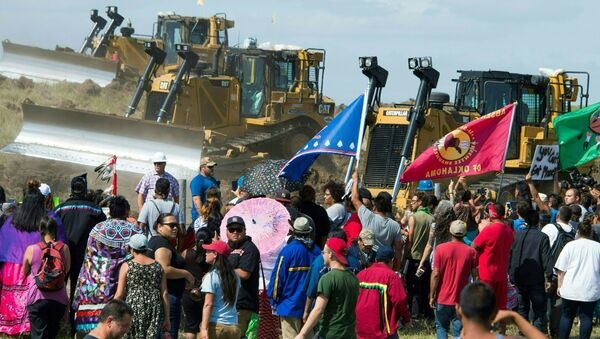WASHINGTON (Sputnik) — On Wednesday, the US Army Corps of Engineers granted easement needed to immediately resume work on the final phase of the $3.7 billion pipeline, which was in limbo pending an environmental impact statement since December.
"The tribe requests that a temporary restraining order preventing drilling under Lake Oahe be issued immediately with a hearing to be held on this matter at the Court’s earliest convenience," the court documents stated on Thursday.
The tribe also requested a preliminary injunction to prevent drilling, according to the court documents.
A hearing on the tribe’s request to temporarily block construction of the Dakota Access pipeline is scheduled on February 13.
The tribe has cited the Treaty of Fort Laramie with Sioux of 1851 as the basis for arguing that construction is not on US federally-owned land, but on designated land belonging to the Great Sioux Nation.
The Cheyenne River Sioux tribe differs from the Standing Rock Sioux tribe, which has also been involved in efforts to block construction of the Dakota Access pipeline and protect the Missouri River and Lake Oahe water sources which both tribes use. The Cheyenne River Sioux tribe is located in the US state of South Dakota and the Missouri River serves as its eastern border.



